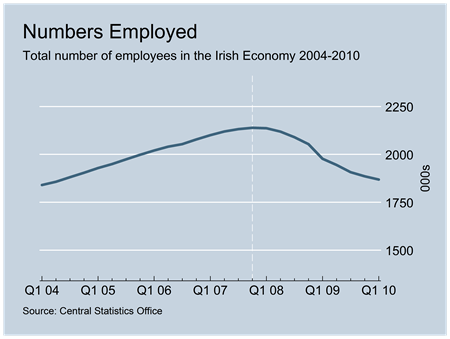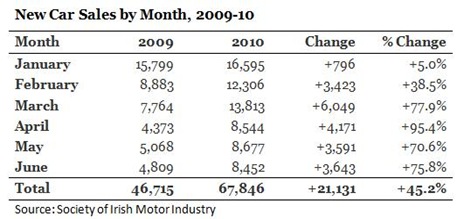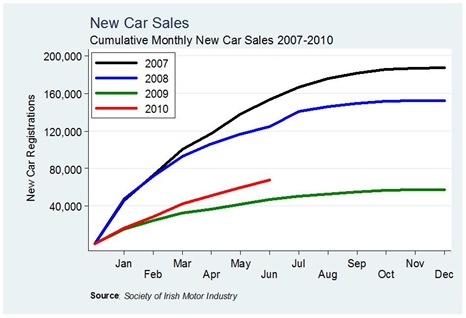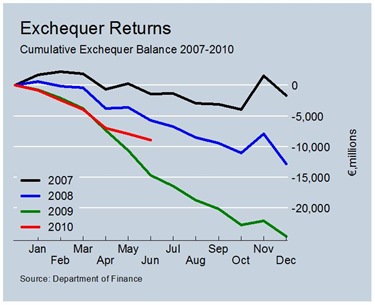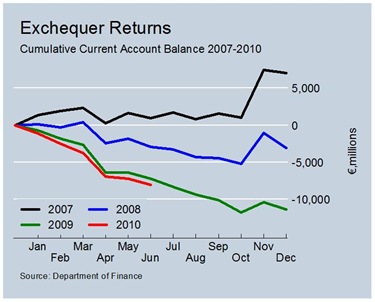The overall index by volume is up 3.5% on the year to May, but is actually down -0.1% by value. What is of more interest is the retail sales index excluding motor trades, given how heavily weighted the overall index is toward this one sector. Motor trades make up 25% of the overall retail sales index in May.
When looking at a previous release we felt that a recovery in retail sales may be imminent (retail sales climb again) but it is now clear that this has stalled. Here is the retail sales index excluding motor trades by value and volume. Although the huge decline seen in 2008 and 2009 has eased considerable, there is an absence of a real recovery.
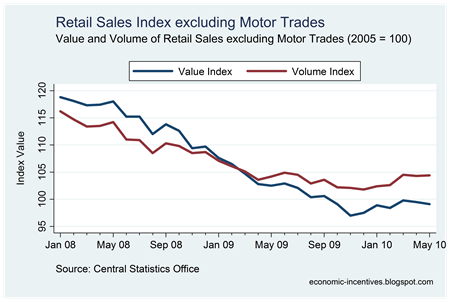
This absence of a sustained recovery is also supported when looking at the annual and monthly changes.
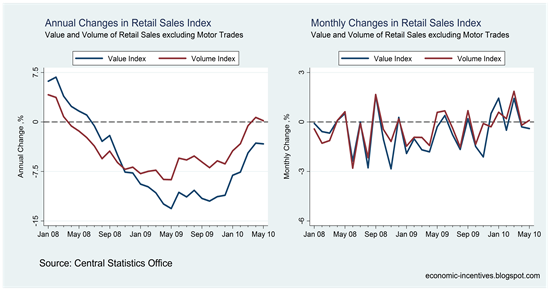
The annual change in value index remains stubbornly negative due to effects of price deflation and increased consumer bargain-hunting. The annual change in the volume index turned positive in April but dropped back towards zero in May.
Although the monthly change in the volume index has been positive for four of the past five months, the monthly change in the value index has been negative for three of the past four months.
The volume index only barely rose in May (+0.1%) suggesting that the increases seen up to March have petered out. The value index fell in May (-0.4%) and does not augur well for VAT revenues which are obviously based on the value of sales. Tweet

